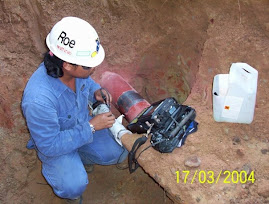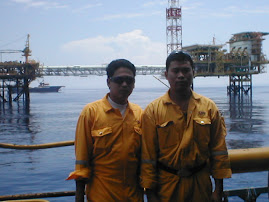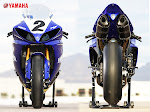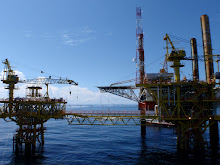The effect of heat on weldments can cause all kinds of distortions problems. Many of these problems can be eliminated by planning the sequence, size, and location of the welds. Some general rules that have been outlined in many of the texts published by the Lincoln Electric Company are listed below.
1) Do not overweld
2) Use intermittent welding.
3) Use as few weld passes as possible.
4) Place welds near the neutral axis.
5) Balance the welds about the neutral axis.
6) Use backstep welding
7) Anticipate the shrinkage forces.
8) Plan the welding sequence.
9) Remove weld shrinkage forces after welding.
10)Minimize welding time.
An excellent text for reference is The Procedure Handbook from which the above list was taken. The Lincoln Electric Company, 22801 St. Clair Ave. Clevland, Ohio
The Welding Institute has an informative website:
http://www.twi.co.uk/bestprac/jobknol/jk36.html
The following discussion shows some examples for problems encountered and possible solutions.
Distortion of a simple Tee joint
The first example is very common and has several possible solutions. The tee joint using plate is a common subject of examples in text and has some problems that many people fail to visualize.
In example A the bracing prevents movement and forces the weld to stretch or yield as it cools. There will be some tension on the bead faces . It will be the amount of tension that would match the yield strength of the weld metal. Some minor distortion will be evident when the braces are released but it usually is within acceptable tolerances.
In Example B the brace will ensure that the relationship between the right side and the upright will stay close to ninety degrees however the left side is free to shrink and distort. Often the braces will be placed as in this example because braces on the left interfere with the welder's free access to that side.
Example C is the result of welding equally on both sides. The upright remains vertical but the base piece is bowed.
Example D is the best solution to prevent C however it requires that the assembly be pre-bent against the brace or strongback.
Overwelding is a common error which increases the chance of distortion.. Sometimes it is caused by simple ignorance and other times it is a combination of people and factors. Typically the engineer calls for a 3/8 fillet five inches long. The detail draftsman rounds it up to say six inches. . . after all a six inch bead was called for for all the other parts of the job. The fabricator in the shop assembles the unit and marks out the welds for the welder. He wants to make sure that the marks are at least six inches apart and in his haste some of the marks are seven inches apart. The welder, seeing that he must use stitch welds goes one half inch past the marks left by the fitter.
Now the weldment is completed. The welds are certainly strong enough however the item has been overwelded by 3/5 or sixty percent. If there was potential a distortion problem it will now rear its ugly head. Now is the time everyone will try to point fingers. It is of no use because the deed is done. Care in following instructions would have prevented the problem before it occurred.
An example is the welding done on a small aluminum tool tote. The material that it was made of was 3mm thick aluminum The bottom and sides were one piece formed into a "U" with end pieces welded on. The welds were all corner joints done from the outside to form a nice radius. The owner had not time to run fillets on the inside of the box. He expressed the intention of doing those inside welds when he had time so that the box would be much stronger. It was pointed out to him that the only likely place of weakness was at the top edge of the corner joint and a one inch long bead on the inside at the top would be more than adequate. If he welded the complete inside corner he would be the owner of a twisted and buckled tool tote that would not be any stronger.
The example is shown below. For most cases an open corner joint will produce more than enough strength when it is welded from one side only. If there is a serious strength concern then stitch the inside at critical points only.
-------------------------------------------------------------------------------------------------
Welding About Central Axis
This concept along with proper sequencing can significantly reduce unwanted distortion. The objective is to make the shrinkage forces exert their influence against each other in order to balance out. In most cases the forces created by shrinking weld metal will act thru the central axis as a fulcrum. The diagram shows this effect. The left side of the piece is welded which causes the shrinking force as shown by the arrows. The left side is placed under tension and stretches so that the unwelded side becomes the long side and the welded side becomes the short side. In the example on the right the forces of the two welds balance out and the assembly remains straight. Keep in mind however that the overall length will be slightly reduced.
There are two main shrinkage forces that change the shape of a welded assembly as the weld cools. The transverse shrinkage is the one of main concern to most situations. When splicing plates or using long weld beads the longtitudinal shrinkage forces must also be considered. The diagram below illustates their action. These are not the only forces that are considered by engineers but for the average application they are the primary forces.

Reinforcements added to beams can cause unwanted bending if consideration is not given to how the assembly will distort from weld shrinkage.

Joining plates or other items along a straight seam not only creates problems with transverse shrinkage but also longtitudinal shrinkage. The two main tactics are skip welding and back stepping. Skip welding reduces the effect of distortion simply by reducing the total amount of heat put into the work. Often there is no need for continuous weld beads particularly if the item welded on is acting as a stiffener. Back stepping reduces distortion by locking up the joint ahead of where the main part of the weld will occur thereby preventing movement of the joint as the heat builds up in the weldment. Prepositioning of large plates can help in some situations. An example is the longtitudinal welds on the side of a truck dump box. Below is drawn a single side with an insert strip that creates the inside of the box

Left and right sides are placed against each other with a spacer block in the center and clamps on the ends creating a bow on each piece. When the weld is completed and cooled the clamps are released and the sidewalls spring back to a flat shape.

In the previous example skip welding and then welding in the remaining sections or a backstepping procedure would still be prudent. When trying to control distortion one must use all available tactics in combination for maximum effect.
Splicing plates together can result in unwanted buckling. When initial fitting the plates there are several approaches. It is wise to lay the edges together and see how they meet. Often for some reason the edges are not exactly straight. This can be used to the advantage of the fitter or can create future problems both for the fitter and for the welder. Generally when butting two plates together edge to edge there will be shrinkage as the edges are tack welded together. The point that closest contact is made is often the best location for the first tack weld. If the edges are absolutely true then it is wise to set the plates almost touching at one end and having a gap at the other end of the joint. The first tack is placed at the point of contact and successive tack welds will pull the plates together as the joint is lined up and tacked. If the joint is closing up too rapidly then the tacks sould be made in a backstepping direction and kept small in size. It the gap needs to be closed then the tacks should be larger and made in the direction of the successive tacks. One can place a finger across the weld joint ahead of where the tack is being made. As the tack weld is made one can feel the initial spreading of the joint and then the closing of the gap as the cooling tack weld shrinks. The movement is so slight that the eye often will not detect it.
These principles are universal and don't really change whether one is joining half inch thick steel plate or autobody sheetmetal. Big job or small, the mistakes in the fitting are just as embarrassing. In addition to paying attention to the gap along the joint the thicknesses of the two plates must be aligned as the tacks are made. The following situations show the approach to take when panels are not cut absolutely straight. The sequence of tack welds are indicated. Similarly the sequence of weld should follow a similar sequence. The welder, if he takes a few moments, can reduce problems of buckling by monitoring plate movement and changing the placement and direction of his welding weld bead as he notices problems.
The example below is more realisitic. In this case one will have to start the tack welding sequence at the center of the seam line. Note that tacks are alternated to prevent the plates from hinging and opening more at one end than the other. The welding would follow a similar sequence however the welder would decide if he need to pull the joint together more with his welding or not. If the joint is closing up too much he would back step. If no problems are indicated the proper backstepping procedure would be: 2 to 1 then 3 to 1 then 4 to 2 then 5 to 3 then 6 to 4 then 7 to 5 and finally edge to 7 and edge to 6.

A true insert is always a problem because one cannot simply "chase" the shrinkage out to the edges of the plate. In the diagram below one can see that the transverse shrinkage will pull the plate in several directions. The likely result is buckling at the turn of the seam. This oil can effect on the plate can be reduced by strongbacking across the seam before welding . In addition it would be wise to follow a sequence. The fit at "b" and "c" is closed and will pull the sheet to the right. The area at "d" should not open up so can be left as the last location to tack weld. The welding will also have to follow a similar sequence. Likely b-a , c-b, a-d, edge to c and finally edge to d would offer the least distortion. The sequence might vary as the welder notes the nature of the shrinkage after each weld. Usually the curve of the seam will control or minimize the longtitudinal shrinkage. The transverse shrinkage now becomes the concern. Buckling or oil canning is a problem with this type of insert.
 ------------------------------------------------------------------------------------------------
------------------------------------------------------------------------------------------------
Distortion Control of Frameworks Frames are the easiest to control because they are inherently braced. A plan of attack by the welder will prevent most problems. Solving the problem afterwards is usually the most difficult since the framework is locked in position.

Hand railings often show a kink at the stanchions. The amount of bending may not be important in an industrial setting. In a residence or shopping mall it would not be acceptable.
The standard measures to control this effect are:
- Minimize gaps. Excessively large gaps will require more weld metal to fill and will increase the distortion.
- Minimize size of a weld bead.
- Preheat top of rail. Even heating top surface to a blue with a torch before or during welding the underside of the rail will reduce the shrinkage.
- Use temporary bracing on all free ends. Free ends such as the lower part of a stanchion or the extension of the handrail will pull unless a temporary brace not tacked into position and removed after the weldment has cooled. A full length brace is another option.
- The diagonal and the full length are not both required.
When tubes meet at right angles to form a tee, the welds that join will apply heat on one side of the long tube.
It is wise to regularly check the straightness of members using a two foot straightedge. A camber over 1/8 inch in two feet becomes easily noticeable.
A similar thing happens with permanent braces placed to strengthen and hold a corner connection at ninety degrees. The diagram below illustrates the problem. Applying that correct heats to the red areas will pull the tubes back.
One simple solution is to duplicate the welds placed on the inner corners of the tubing with simple weld beads placed on the free corners of the tubing. Heating with a torch to a red heat and letting cool will have the same effect. One must be careful not to apply too much heat. Doing it in two or three stages is prudent until one is sure what amount of heat is required.
Some framing such as a canopy that attaches to a wall over a store front entrance requires additional bracing before welding and sometimes requires further straightening after welding is completed. The blue indicates the forces and resulting distortion. The red indicates the location of the corrective heats. Bracing would reduce or eliminate this problem.

The photos show actual examples of framing. Note that shrinking heats were applied in order to straighten the assembly after it had distorted from welding. The major problem was caused by a little angle that had to be continuously welded on the inside of the tubing.
Small trailer frames are usually built on a single plane. By using a sequence one can keep the frame square and straight. If desired, a positive camber between the axle and hitch can be welded in and a negative camber created on the overhang behind the axle supports. If not successful at causing the frame to take a camber after welding is completed, the camber can be created afterward using heat from a torch. The blue lines indicate a desired trailer camber. This camber is slight in the order of 1/8 in a three-foot span.

Distortion is always a problem when welding. The suggestions outlined here are by no means the only solutions. If one keeps in mind that he may face a distortion problem whenever he welds there is a likelihood that the problem will not become impossible to control.
-------------------------------------------------------------------------------------------------
The procedure goes something like this:
- A small area is heated until it becomes red hot. The torch is then removed.
- The heat expands outward against the surrounding cold metal.
- The red area is plastic and soft like putty. As a result it "upsets". The metal cannot push anymore outward so it expands by swelling in thickness.
- This thickened area now starts to cool. As it contracts it pulls at the cold surrounding metal. Since there is not enough metal to replace the thickened area the cooling spot pulls even more causing the metal around to move towards the area that was originally red.
The term "Hot side is the short side." is a quick way to remember which way the steel will move after it is cool. Credit is due to a man named John Adolph who has extensive experience in flame shrinkage
The pictures show an example of shrinking to repair a set of four frames. The frames had developed a pronounced bend after welding was completed. The Rosebud torch can be seen on the steel horse.
What was required was a series of heats along the flanges of the large channel. The lower flange needed more heats since it was opposite the majority of the weld beads. After cooling the string showed a bow of 1/8 inch which was "good enough".
In this case wet rags were used to cool the assembly down rather than a siphon gun which might have been quicker. Two frames were shrunk at the same time, alternating heats between. Because of all the locked in shrinkage from the welding, heats every six inches along the lower flange had to be applied. Usually four heats evenly spaced over the complete length were done then let cool before applying more heats.
This large rack for holding parts was overwelded. the vertical support tubes bent resulting in all the shelf arms sloping downward before they were even loaded. The following picture shows the location s of heat applied to straighten the vertical tubes. The shelves were emptied before the shrinking began. The burned paint indicates the pie shaped locations that were heated.
It is important to understand that the air and water mist is used to increase the gradient of temperature across the heated area. It is not used for direct cooling on the red hot metal. Quenching the red area with the water spray will not aid in shrinking the metal and can affect the strength and ductility in some cases.
-----------------------------------------------------------------------------------------------------------------
Siphon gun
- a quick disconnect fitting to match the air line.
- a valve to shut off or control air flow. (ball valve preffered)
- short sections of pipe to match the air fitting and valve.
rubber hose or plastic tubing. - three inches of brake line or similar tubing to match the hose.
A hole was drilled in the side of the 1/2 inch pipe. I made it large enough so that the small steel tube would slide in easily and could be wiggled around . Strike the pipe in the area of the hole so that it is narrowed creating a venturi. Slip the small tube into the pipe while air is blasting through. By trial and error the "sweet" spot can be located. Tack weld the tube in position and then check before welding up solid.
The main thing to understand when using a siphon gun when shrinking is not to quench the red area. The goal is to keep the area surrounding the red as cool as possible. Slowly move the blast around the perimeter, moving in toward the red as the metal turns black.
Guide bars are very helpful when you want to make a short straight cut. The pictures illustrate the variations. The design is limited by your imagination.
To help the torch tip ride smoothly along the side of the bar rub the bar with soapstone. It works like a high temperature lubricant. A very gentle side ways pressure is used to hold the torch agains the guide. The user then only has to contend with height of the torch off the work and travel speed.
Some people design their guide bars so that they can ride the shoulder of the torch tip nut on an edge so that height is predetermined.
If one has to cut many slots or belvels that are all identical then some sort of guide will increase the quality of cut as well as increasing the speed. The picture below shows a Tee shaped guide used to cut flanges on beams when they are laying on their side.
There are several other guides hanging wating for another opportuninty to save time and trouble.
Running "buggo" or track burners can save considerable time and produce long quality cuts. The picture below is Tony's (workmate) invention. He used these little brackets to support the track when having to split beams into tees.
If the turnbuckle is not long enough to span across a frame simply tack some bar to it. The photo shows a turnbuckle that is in regular service and paid for itself many times over. Scrap bar is tacked on the ends from the last time it was used.
Once square welding can commence and the turnbuckle can be removed after everyting is cooled down.
















